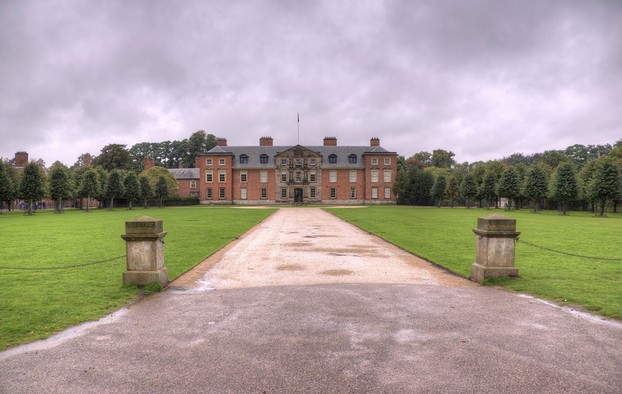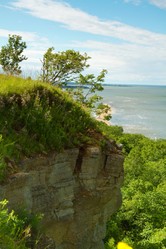The most memorable part of Winter mountaineering is snow, but the walks of earlier years fall into a confusion of memories. The places are clear enough, but the dates are forgotten. I can recall one time when we walked up the Glyders, in Snowdonia, whose jumbled boulder field was shrouded by a thick layer of snow. The path upward was past the Devil's Kitchen, Twll Dhu, a dark cleft through which water surges down from the summit. There is a climbing route, but only in Summer, and this time the cascade was hanging with icicles. We took the alternative and safer route, the footpath that rises steadily to the higher slopes of the mountain. You have to be wary as you tread, for the summits have small hanging valleys, tiny U-shaped stream beds, residues of the pre-glacial drainage of the hill, whose streamlets cascade in Summer over the dark wall of the Cwm. I was not careful enough and put my foot through the ice into the stream bed below. Wringing out your sock at 3000 feet in snowy weather is a chilly experience. We ambled round the summit and walked across the saddle to Glydr Vawr. The misty air limited the view, but the majesty of the Winter mountain takes you out of your human comfort zone, to the edge of habitabilty, to a place where humans pay fleeting visits and then retreat. The Winter mountain is real wilderness. We need it but cannot stay long in its presence. We descended to the safety of the valley, stopping at the Tea Shack for a cup of steaming tea and a burger.
Yet some walks are memorable for what went wrong. Three of us, two males and a female, once walked into the south Carneddau, divided from the Glydrs by the Ogwen Valley. The white magnificence of the hills entranced us, but the group leader navigated wrongly and as the snow storm swirled away visibility to a few yards he misread the route and took us into the uninhabited part of the range with evening falling. Once we recovered our bearings in the fading light, we were faced with three choices: go back over the mountain, go the long route round it, or stay the night on the hill, but the last would have meant the mountain rescue team being alerted. But my legs were too tired for the former, so we took the long trek round the mountain. We managed to return to the climbing hut just before our panicking friends telephoned the rescue team to report us missing. The drinks in a warm bar were welcome that night, but next day my legs felt like stone. Lessons learned!.
Yet there are times when the air is clear and the snow is light. One time in Langdale,Cumbria, we, the Beswick family, walked up to Stickle Tarn and on the way found a snow bank. The children piled in and soon the children of other families joined in the fun, leaping and rolling down the bank, throwing snowballs and having a really good time. Purists might complain about the pristine beauty of the snow being spoiled, but by the end of the day there were several happy children whose family walks had produced unexpected fun.














 Pilgrimage. A reviewon 06/15/2025
Pilgrimage. A reviewon 06/15/2025
 Leo the Fourteenthon 05/09/2025
Leo the Fourteenthon 05/09/2025
 The Melsonby Hoardon 03/25/2025
The Melsonby Hoardon 03/25/2025


Comments
Yes. There is a humorous look at male female relationships. Chris and Barbara are two of Maureen's friends, two nice women
Thank you for your comment below in answer to my previous observation and question.
Also, thank you for the short story The Worms and King Egbert. It has character, humor and plot even as it has a sense of adventure with King Egbert.
It's particularly amusing how the Queen is intent upon a merry tea with friends Barbara and Chris. A king may be king even as a queen must be queen and make her friends and guests matter ;-D!), correct?
None that I know of.
Thank you for your comment below in answer to my previous, same-day observation and question.
Is there any particularly famous liminality in regard to British Isles headlands?
I know that islands were sometimes places on the edge, but as it were. In the Matter of Britain Tristan and the Morholt fight their battle on an island, and in the Middle Ages two Norman nobleman fought out a challenge on an island in the Thames, where Magna Carta was signed. But whether there were degrees of liminality between different sorts of liminal places is not known.
Thank you for your comment below on Nov. 21, 2023, in answer to my previous, same-day observation and question.
Mistletoe causes me to consider Christmas. Christmas causes me to consider liminal places and times.
The second paragraph to the fourth subheading, Winter by the shore, considers that "Yet the shore is a liminal place. For our pagan forebears liminal places were those where two worlds met: mountain tops, wells, caves, and shores. Headlands were particularly significant, as they can be where Earth, sea and sky meet, and the power of the wind is keenly felt."
Is an island liminally as significant as, less significant than, more significant than headlands?
I believe that there is a small number of mistletoe farms, but much of it is foraged wild in western England.
The first paragraph to the first subheading, The bones of the land, describes mistletoe as suddenly visible because of the winter-barren trees.
Might that mistletoe stay in the trees or must it be collected by those who sell holiday mistletoe?
In other words, would mistletoe purchased on your, eastern-pond side be from mistletoe farms -- as they are on this, eastern-pond side -- or from the wild?
Climate change. Hurricanes in the Americas cause streams of warm air to cross the Atlantic, picking up moisture as they go, which precipitated on Cumbria.
The second sentence in the second paragraph to your first subheading, The bones of the land, considers that "My mind roams back over the years to a January day in Cumbria, in years when that lovely country was not beset by floods that wreck homes and ruin businesses."
Why does Cumbria suffer from floods now even as that county escaped such environmental catastrophe in the past?